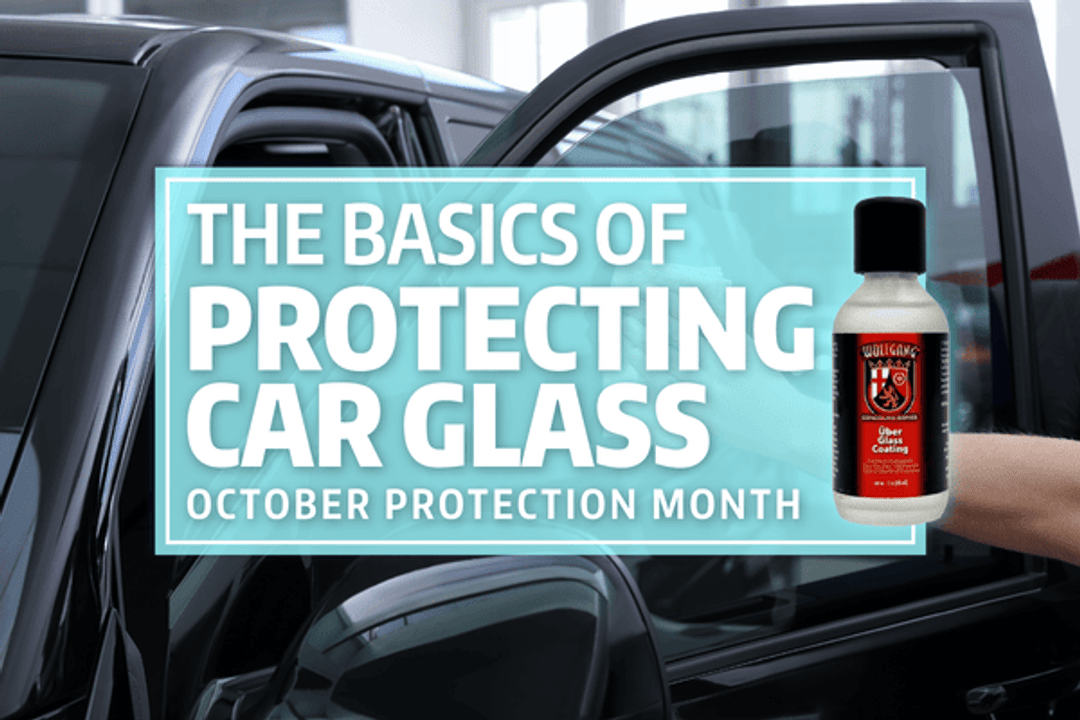Protect Your Ride: Autogeek’s Guide to Automotive Glass Care Protection
Your car's windows and windshield are critical to safe driving and the overall appearance of your vehicle. A dirty, streaky windshield can cause dangerous glare and reduced visibility, while a clean, protected surface makes all the difference, especially in adverse weather. Autogeek knows that proper automotive glass care goes beyond a quick wipe with a paper towel. This guide will walk you through the best practices for cleaning and protecting your car's glass, ensuring a crystal-clear view on every drive.
Why Your Car’s Glass Needs Special Attention
Unlike the glass in your home, automotive glass faces a unique set of challenges. On the exterior, it battles road grime, bug splatters, tree sap, ice, and hard water spots. On the interior, it's a magnet for oily films from outgassing vinyl and plastics, fingerprints, and "smoker's film." Using the wrong products, like household glass cleaners with ammonia, can damage window tint and leave a hazy residue. Professional-grade products are formulated to tackle these specific issues without causing harm.
The Right Tools and Technique for a Streak-Free Finish
Achieving streak-free windows is a matter of both using the right products and perfecting your technique. Forget paper towels—they leave lint and can scratch the surface over time. Instead, a high-quality microfiber towel is your best friend.
Our recommended method for a flawless finish:
- Work in the Shade: Never clean glass in direct sunlight or on a hot surface. The cleaner will evaporate too quickly, leaving behind streaks.
- Use a Dedicated Glass Cleaner: A product like our Wolfgang Perfekt Vision Glass Cleaner is formulated to cut through tough road film and interior grime without ammonia, making it safe for all tinted windows.
- Two-Towel Method: Spray the cleaner directly onto one waffle-weave or short-pile microfiber towel. Use this towel to clean the glass in a systematic, side-to-side motion. Then, use a second, clean, dry towel to buff the surface to a streak-free shine. This technique ensures you're always using a fresh surface for the final wipe.
- Interior vs. Exterior: When cleaning the interior glass, spray the cleaner onto your towel first, not the window. This prevents overspray on your dash and interior trim. For the exterior, clean the glass in vertical motions, and for the interior, use horizontal motions. This helps you easily identify which side a lingering streak is on.
Beyond Cleaning: The Benefits of Glass Sealants and Coatings
Once your glass is perfectly clean, you can take its performance to the next level with a protective coating. This is where automotive glass protection truly shines.
- Glass Sealants: These products create a slick, hydrophobic barrier on the surface of your glass. Water beads up and rolls right off, making it easier to see in the rain—even at lower speeds. This effect, often called "water beading," reduces the need for wipers and significantly improves visibility. Check out a product like Gyeon Q2M Glass Sealant for excellent water repellency and durability.
- Ceramic Glass Coatings: For the ultimate in long-term protection, a dedicated ceramic glass coating is a game-changer. These coatings, like Wolfgang Uber Glass Coating create a semi-permanent, super-hydrophobic layer that can last for years. In addition to repelling water, they also resist etching from hard water spots and make it far more difficult for bugs, ice, and road grime to stick to the glass, making maintenance a breeze.
Don’t Forget the Details: Wipers and Glass Polishing
Your car's glass isn't just the main windows. Don't forget your mirrors, sunroof, and especially your wiper blades. Clean your wiper blades with the same glass cleaner you use on the windows to prevent them from smearing dirt and grime back onto a freshly cleaned windshield.
For older vehicles with minor water spots or light scratches, a glass polish can often restore clarity. Products formulated for glass contain mild abrasives that can safely remove stubborn mineral deposits and imperfections that regular cleaners can't. This can be a cost-effective solution to improve visibility before considering a full glass replacement.
By investing in the right glass care products and following a proper technique, you'll not only enhance the look of your vehicle but also improve safety on the road. A clear view ahead is a safer view.
Frequently Asked Questions
Q1: Can I use a household glass cleaner like Windex on my car windows?
A: It is highly discouraged, especially for interior windows. Many household glass cleaners contain ammonia, which can damage and discolor aftermarket window tints and other interior surfaces. Always opt for a dedicated, ammonia-free automotive glass cleaner for safe and effective results.
Q2: How do I remove stubborn water spots from my glass?
A: Water spots are mineral deposits that have etched the surface of the glass. Regular glass cleaners often won't remove them. The best solution is to use a dedicated glass polish or a water spot remover, which contains a mild abrasive or a chemical formula to break down these mineral deposits.
Q3: How long does a glass sealant or ceramic coating last?
A: The lifespan varies. A typical glass sealant will last for 3 to 6 months. A professional-grade ceramic glass coating, when properly applied and maintained, can last for 1 to 2 years or even longer. The durability depends on the specific product, your driving habits, and environmental conditions.
Q4: Do glass coatings prevent rock chips?
A: No, glass coatings are not designed to prevent rock chips. Their primary function is to make the glass hydrophobic, easier to clean, and resistant to environmental etching and staining. For protection against rock chips, a dedicated clear bra or Paint Protection Film (PPF) is the correct product to use.
Explore Popular Articles
-
How to Choose the Right Lake Country Pad for Paint Correction
9th Dec 2025 @ 3:42 PMPart 1 Compounding Intro: Understanding Severe Paint Defects We have all seen it before dull, faded
-
Detailing the Legend: A Retro Racer Revival
3rd Nov 2025 @ 3:58 PMDetailing a Legend in the Autogeek Bay The Autogeek Detailers recently had a chance to work on one o
-
FLEX Friday’s Are Back At Autogeek: Learn What This Means & How You Can Save!
31st Oct 2025 @ 3:50 PMThat's right, FLEX Fridays are making their return! This is your chance to score exclusive FLEX poli




